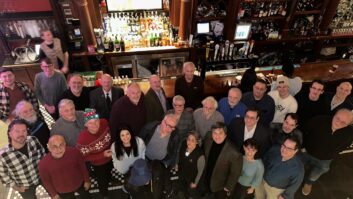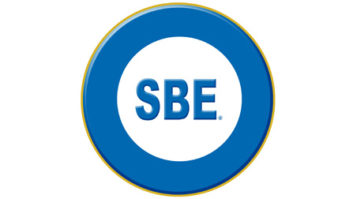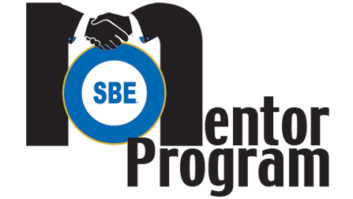At the recent NAB convention, the Society of Broadcast Engineers held meetings on topics related to Broadcast Auxiliary Services. There was a high level of interest in these topics, largely due to recent FCC actions that are changing the BAS landscape.
Two of the most visible issues have been (1) the recent Report and Order in ET Docket 01-75, making sweeping changes in procedures and technical standards applicable to BAS, and (2) the continuing saga of the reallocation of the first two channels of the 2 GHz microwave band from BAS to new services such as satellite phones and possibly other technologies.
The final chapter is yet to be written in either of these actions; they are still getting attention from groups both within and outside SBE. Because the 2 GHz microwave issue is primarily of interest to the TV side of the industry, the focus here will be on the 01-75 Report and Order and SBE’s response.
Coordination
The scope of this FCC action is so far-reaching that one article can scarcely do it justice. (However, SBE FCC Liaison Committee Chairman Dane Ericksen, P.E., CSRTE, has done an excellent job summarizing it in an article in SBE’s March issue of The Signal.) Therefore, the information that follows is deliberately limited to the new rules’ effects on frequency coordination.
SBE is known for its involvement in coordination of BAS frequencies. Our coordinators help their local broadcasters plan not only “permanent” facilities but also mobile or temporary operations required to cover news and sporting events.
Want to know how the TV or radio RPU (remote pickup) frequencies are shared by all the stations in a market? Ask the local SBE coordinator. Need a new STL (studio-transmitter link) in order to move your studio? Well, that has always been a bit more complicated – you probably have a consulting engineer helping in this case – but you would still go to your local SBE coordinator to find out what frequencies in the applicable band are already in use, and where.
If you have had any experience coordinating a Part 90 radio or a Part 101 microwave system, you know those services depend on a more formal coordination process. Under the new rules, broadcasters will soon have to follow the same formal coordination process used in the private microwave services. The new procedures will apply not only to the BAS microwave bands from 2.5 GHz on up, but also to the 950 MHz spectrum where most radio station STLs operate.
How soon will this happen? That’s where SBE’s efforts are paying off.
The effective date of the new rules was to be April 16, 2003. Many of our members voiced their concern about the nature of frequency coordination after that date. If local coordination was no longer good enough for the FCC, what would replace it?
Fearing there was no good answer to that question yet, SBE asked for a one-year stay in the implementation of the new requirements, to which the FCC granted a six-month stay. Now we have some breathing room, thanks in large measure to the work of SBE’s FCC Liaison Committee.
ULS flaws
Now that we have this reprieve, what do we do with it? The first priority is making sure the system the FCC proposes to replace local coordination is actually up to the task.
For about four years, Part 101-style coordination has depended on the Universal Licensing System, a combination database/on-line filing system developed by the FCC. While ULS is an amazing example of a government agency “getting technology right” in many respects, it is deeply flawed as a tool for BAS frequency coordination for several reasons.
For one thing, applications filed on the old Form 313 did not include some of the data ULS now tracks – receive-site coordinates, for example. For another, the migration of BAS license data from its former home in the Media (formerly Mass Media) Bureau to its new residence in the Wireless Telecommunications Bureau (proud parent of ULS) resulted in some licenses being canceled due to complications of the linkages between auxiliary and parent-station licenses.
These problems were at the heart of SBE’s stay request and the commission’s reasoning in granting it. “We agree with SBE that legacy database inaccuracies in the ULS could seriously affect the efficacy of prior coordination procedures,” said the commission in an order dated April 15. “We will therefore delay for six months the effective date … (to) provide time for commission staff to address completion and correction of receive site information in the ULS database.”
The FCC’s next step was to contact SBE and suggest a meeting with them to discuss how we might work together to correct the ULS problems. At an April 29 meeting, SBE asked the commission to set up a mechanism whereby licensees could add missing information to their BAS records without having to file a modification and pay the associated filing fee. As of this writing, that request is pending.
By the time you read this, such a procedure may have been agreed upon. If you have not already seen it in a Public Notice from the FCC, watch the SBE Web site, www.sbe.org, for more information.
In the meantime, keep these things in mind:
* Whatever procedure is finally put in place is certain to require electronic, not paper, filing. You should become familiar with the ULS Web site: www.wireless.fcc.gov/uls.
* To see what BAS licenses are linked to your station license(s), use the Web site www.fccinfo.com. If any of your BAS licenses do not show up, find your file copies for verification.
* For fixed-link licenses that lack receive-site data, you must find or collect the missing information: site coordinates, elevations, antenna models, etc. If you have any recently issued BAS licenses (easily identified by the green safety paper they are printed on), it might be useful to compare them with the older licenses in your files.
The SBE will continue working with the FCC on this issue as long as it takes to achieve a workable system.










